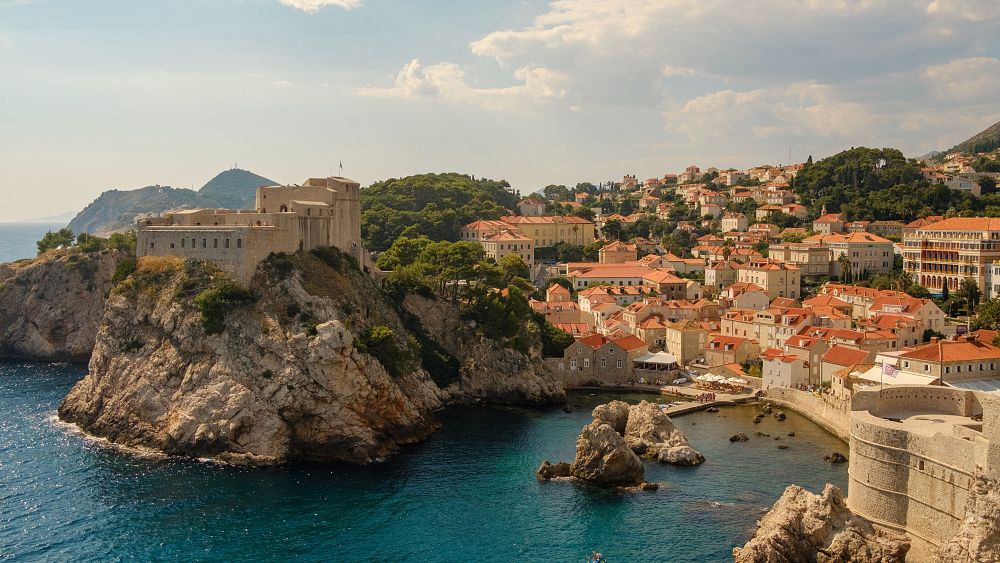I’m standing in the heart of Dubrovnik in one of its many narrow alleys where honey-hued palaces give shade from the sun.
I should be admiring the ornate stone carvings of the Renaissance buildings and the simplicity of the tiny chapel at the end of the street.
Instead, I’m crushed against the wall by a tour group shuffling past while getting distracted by the garish window display of one of numerous Game of Thrones shops.
The experience of visiting Dubrovnik can be exhausting and stressful, and there’s a reason why.
The southern Croatian city now ranks top on the list of overtouristed destinations, according to findings by Statista.
So is it still worth going? And how can you have a relaxing time if your heart is set on the - admittedly stunning - walled city?
What is it like to visit Dubrovnik?
The coastal city of Dubrovnik crowns a rocky plateau that juts out into the Adriatic sea. Robust 16th century walls encircle the Old Town, home to architectural splendours like the baroque St. Blaise Church and the gothic Rector’s Palace.
Wake up at sunrise, and you can walk through the limestone paved streets imagining the city under the Byzantines and Venetians, weathering wars and sieges, seemingly immortal.
Attempt to sightsee in the height of summer, however, and you’ll find these historic gems are overshadowed by the rampant, in-your-face tourism that now dominates the city.
Walking through the centre, you squeeze between restaurant tables that are taking over the streets while being bombarded by the calls of waiters and souvenir vendors.
Tacky Game of Thrones merchandise (Dubrovnik was a key filming location for season 2) mars shop windows and branded t-shirts and caps hang covering the historic walls making some areas seem like a shopping mall.
After a day battling the throngs of tourists, I vow to return in the depths of winter and beat a hasty retreat.
Dubrovnik is Europe’s most overtouristed city
Using data from 2019, Statista found that Dubrovnik was the most touristed city in Europe, above both Venice and Barcelona.
The city has a population of just over 41,000 and welcomed almost 1.5 million tourists in 2019. That’s around 36 tourists per resident.
The detrimental effects of these numbers are clear to see. Dubrovnik suffers from traffic jams as tour buses park up outside the Old Town walls; the excessive visitor numbers mean damage to infrastructure; and local residents are being priced out.
In 2017, UNESCO advised the city to admit no more than 8,000 visitors into the historic city at a time. Authorities installed surveillance cameras and a counting system, but did not limit numbers.
Recently, however, Dubrovnik’s mayor announced plans to address the negative impact of over-tourism.
One proposal is to require tourists to carry wheel-along suitcases to reduce noise disruption. Tourists who do not lift up their cases will face a €265 fine.
From November, the city plans to develop a luggage drop-off system at the entrance to the historic centre. Visitors will then pay to have their suitcases delivered to their accommodation in quiet electric vehicles.
Authorities have also decided to impose a noise level limit in the streets of the old town.
During evening hours, street musicians, bars and restaurants will not be allowed to make noise above 55 decibels.
How to escape the crowds in Dubrovnik
If you are visiting Dubrovnik this summer, there are plenty of ways to see a calmer side of the city.
In the historic centre, when you are on the main Stradun road that bisects the city, stand with your back to Ploče Gate and head left instead of right.
This takes you to a relatively quieter area of town where you might even see some local amenities like grocery shops and wine vendors.
Walk up lots of steps, right the way to the walls, and you’ll come across Lady Pi-Pi, an informal eatery that looks like a private garden.
The vegetables come fresh from the nearby Konavle valley and dishes are mainly grilled meat and fish from the outdoor stone fireplace. The best part is no groups are allowed.
The foolproof way to avoid the crowds, however, is to follow the locals out of the Old Town.
Gruž, to the northwest of the walled centre, is an up-and-coming alternative neighbourhood where you’ll find outdoor cinema screenings, vintage markets, harbour-side bars and vegan restaurants.
Further along the coast, Trsteno Arboretum is a tranquil garden to while away an afternoon, with a sheltered spot to swim below. And it’s well worth a boat trip to Mljet - where you can find an island within an island, home to an old Benedictine monastery.


